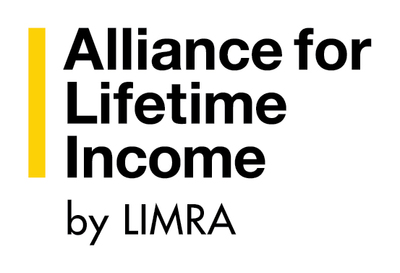Financial Professionals and Clients Disagree on Key Retirement Planning Conversations
PR Newswire
WINDSOR, Conn., Nov. 18, 2025
New Alliance for Lifetime Income by LIMRA findings suggest this disconnect undermines retirement readiness
WINDSOR, Conn., Nov. 18, 2025 /PRNewswire/ -- Financial professionals (FPs) and their clients have sharply different views on whether they discuss critical health-related issues during retirement planning, according to the final chapter of Alliance for Lifetime Income by LIMRA's 2025 Protected Lifetime Income & Planning (PRIP) study released today.
A key component of a comprehensive and effective retirement plan includes estimating potential costs and risks in retirement, including those associated with health care and long-term care. Four in 10 FPs and consumers surveyed agree this is one of the most difficult aspects of retirement planning. Yet, the study shows while most FPs say they are discussing these topics, less than half of consumers recall these discussions:
- 96% of FPs say they talk about physical health issues with clients, but only 44% of clients recall those conversations.
- 90% of FPs report discussing cognitive decline, yet just 31% of clients say the topic came up.
"These communications gaps around healthcare costs can undermine financial security," said Jean Chatzky, education fellow at the Alliance's Retirement Income Institute and CEO of HerMoney. "Even when FPs raise healthcare costs, the message isn't resonating. While an FP may come armed with projections, models, and risk tables, clear, simple language matters more to clients than charts and models."
Shared Optimism and Persistent Concerns
When assessing retirement readiness in terms of savings, FPs and consumers who work with an FP feel optimistic. On average, FPs believe that two thirds of their clients will have the income to cover their essential expenses in retirement; 78% of consumers working with an FP are confident they will have adequate income in retirement. In comparison, just half of unadvised consumers feel the same.
Yet, the study finds there are distinct differences in their perceptions about retirement risks.
- When listing top retirement concerns, consumers who work with FP cite inflation as their top worry (63%), with health care costs (62%) and outliving savings (45%) rounding out their top three worries.
- FPs don't include inflation among their clients' top concerns, instead listing outliving savings (56%) as the top issue, followed by market volatility (51%) and health care costs (50%).
The latest findings show consumers' and FPs' expectations about Social Security also differ. Consumers overall believe half of their retirement income will come from Social Security payments. Expectations of consumers working with an FP are more restrained, saying a third (34%) of their retirement income will come from Social Security. Meanwhile, FPs estimate Social Security will account for only 23% of their clients' retirement income, on average.
Consumers, however, are more pessimistic than FPs about the stability of Social Security. More than half (52%) say they have less confidence than five years ago; just 26% of FPs have lost confidence in the program over the same period.
FPs Overestimate How Much Their Clients Know About Annuities
Twenty-eight percent of FPs believe their clients understand annuities and the role they play in a retirement plan 'very well', but only 14% of clients believe they have a strong understanding of annuities. Earlier LIMRA research shows there is a strong correlation between annuity knowledge and annuity ownership. Consumers who demonstrated a higher understanding of annuities were more likely than those who exhibited lower annuity knowledge to own an annuity.
"With the oldest Gen-Xers now approaching retirement age, most of whom don't have a pension, the industry needs to redouble their efforts to help consumers better understand the critical role annuities can play in filling that protected lifetime income gap left by disappearing pensions," said Bryan Hodgens, senior vice president and head of LIMRA Research. "The good news is that our research shows that a majority of Gen Xers are interested in buying an annuity to build that lifetime income stream and overall demand for annuities is up. Our latest sales data show annuity sales reaching a record high $345 billion for the first three quarters of 2025, a 4% sales increase year over year."
About the 2025 Protected Retirement Income and Planning (PRIP) Study
The 2025 PRIP research study, conducted by IPSOS, is the only study of its kind that simultaneously surveys consumers and financial professionals, with several parallel questions. Now in its seventh year, this year's study surveyed 3,502 consumers aged 45 to 75 — weighted by age, gender, and region in order to be representative of national census demographics — with a corollary survey of 500 financial professionals.
About the Alliance for Lifetime Income by LIMRA
The Alliance for Lifetime Income by LIMRA is the consumer and advisor educational arm of LIMRA. Its mission is to raise awareness of and educate Americans about the value and importance of having protected income in retirement. The Alliance provides consumers and financial professionals with unique educational resources and interactive tools that help build retirement income strategies. Learn more at www.protectedincome.org
About LIMRA
Serving the industry since 1916, LIMRA offers industry knowledge, insights, connections, and solutions to help more than 700 member organizations navigate change with confidence. Visit LIMRA at www.limra.com.
Media Contacts:
Cyrus Bamji
(301) 966-7077
cbamji@alincome.org
Catherine Theroux
(860) 285-7787
ctheroux@limra.com
![]() View original content to download multimedia:https://www.prnewswire.com/news-releases/financial-professionals-and-clients-disagree-on-key-retirement-planning-conversations-302617919.html
View original content to download multimedia:https://www.prnewswire.com/news-releases/financial-professionals-and-clients-disagree-on-key-retirement-planning-conversations-302617919.html
SOURCE Alliance for Lifetime Income


